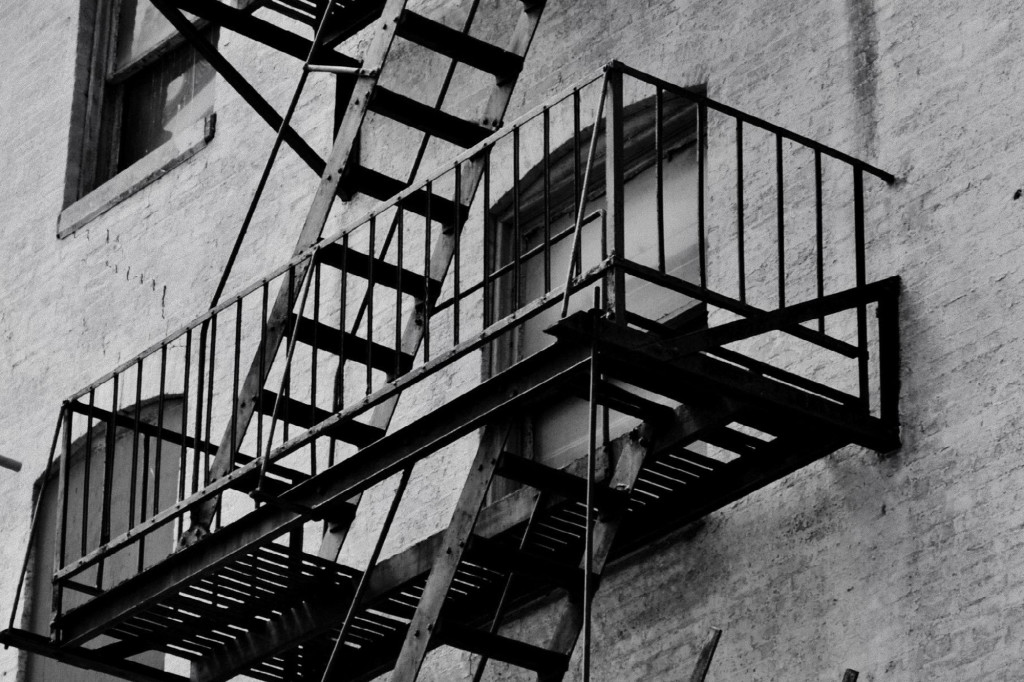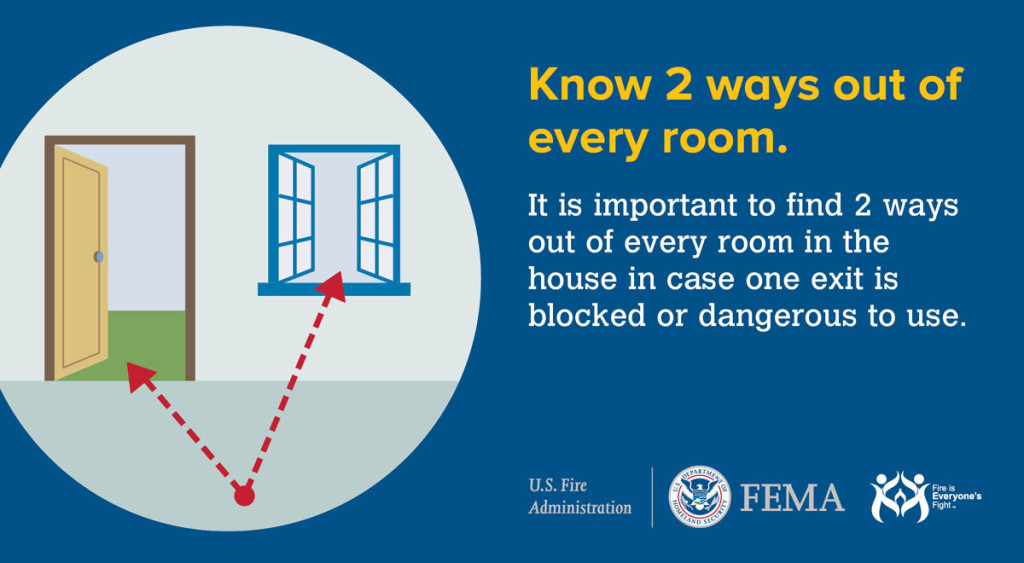In This Article
When you hear the phrase “fire escape”, you may think of the metal platforms and stairs mounted alongside multi-story apartment buildings. While that is a commonly-used term, there's a lot more to escaping a fire than simply climbing out a window and using the stairs. Unless you enjoy the thought of standing on the street in your pajamas while watching everything you own burn to a crisp, it's essential to plan ahead and prepare for a fire in your home.

This may be called a “fire escape”, but it should NOT be the extent of your plan for escaping a blaze.
As we've mentioned in our previous article on fire prevention, fire poses a serious threat to both your safety and your property. According to the U.S. Fire Administration, a total of 379,500 residential buildings were affected by fire in 2014. This led to thousands of deaths, billions of dollars in damages, and untold loss of pets, priceless family items, and other sentimental valuables.
To help this sink in, let's imagine a hypothetical scenario:

It's a few days before Christmas, and you've been sitting on the couch watching Die Hard (a Christmas tradition) and enjoying some beers after a long day at work. Your kids are in bed already, and your wife just headed upstairs half an hour ago. You wanted to finish the movie and your drink, but your eyes are getting heavy. You flip off the TV and go to bed, forgetting to extinguish a candle in the hallway on your way up.
Not long after closing your eyes and drifting off to sleep, you're awoken by the piercing sound of a smoke alarm. Sitting bolt upright in bed, you notice a thick haze of smoke in the air, and fight the urge to cough as you shake your wife awake. You run to grab the kids, and rush downstairs. Choking smoke is everywhere, and you can hear the crackling of flames. You head for the front door, but the wall is already burning, as well as the table that once held the candle. Stumbling through the kitchen with your wife and kids, you're able to make it out onto the patio, smoke billowing from the door frame above your head.
You hadn't thought to grab your cell phone in the rush, so you pound on a neighbor's door and ask them to call 911. Minutes tick by, and your home continues to burn as firefighters roll up. The trucks douse the blaze, but by the time it's extinguished, over half your house is destroyed by fire. The other half is soaked in water. Your stomach sinks as you realize you've lost everything you own.
It's hard to imagine everything you own vanishing overnight, especially if you've been preparing a bug-in plan for other sorts of emergencies. All your stockpiled food, water, medical supplies, weapons, and other belongings could be gone in a heartbeat. And more often than not, staying put and trying to “ride it out” is not an option. You'll need to assess the situation, protect what you can, grab a few key items, and be out the door in seconds. Any other choice could spell death.
The above scenario may be imaginary for us, but it affects hundreds of thousands of Americans each year. Just as you shouldn't rely wholly on paramedics to keep you healthy and safe, you shouldn't rely completely on firefighters to save your home from a fire. Even the best firefighters in the world can't stop a fire before it starts.
So, how should you plan for a home structure fire? There are three topics to consider: prevention, preparation, and escape.
First of all, we'd encourage you to read our recent article, Fire Prevention: Top 10 Residential Fire Sources. It outlines the most common causes of residential fires, and how to avoid each source of danger. This information can help you rethink how you use potential fire sources in your home—extinguishing candles cautiously, keeping heaters far from other flammable objects, and so on.
Much of your time should be spent on fire prevention, since a fire can't burn down your home if it's never ignited in the first place. However, it's still important to plan ahead for unavoidable scenarios, because it's impossible to have a 100% foolproof fire prevention plan.
In the event that your preventative measures have failed, you need to be prepared in order to stay safe. Prepping for a residential fire should include the following measures:
This point ties in with the preparation stage, but focuses more on what to do if you know there's a fire in your home, and it has already grown out of control. In that case, you'll need to get out as quickly as possible.
Here are the basic steps for a fire escape plan:

With these simple steps of prevention, preparation, and escape, you can be ready in case a fire affects your home. Adequate preparation can help you and your family survive the unthinkable. Even if you can't save your home, escaping safely with a stocked bug-out bag sure beats shivering on the curb in your pajamas.
 STAY SAFE: Download a Free copy of the OFFGRID Outbreak Issue
STAY SAFE: Download a Free copy of the OFFGRID Outbreak Issue
No Comments